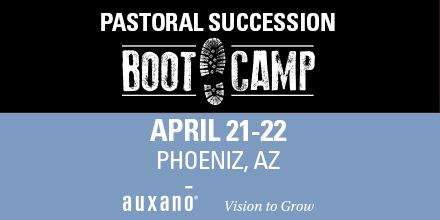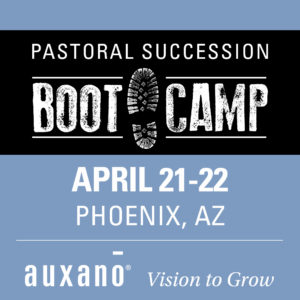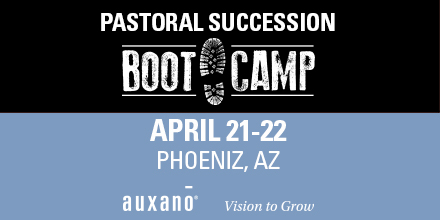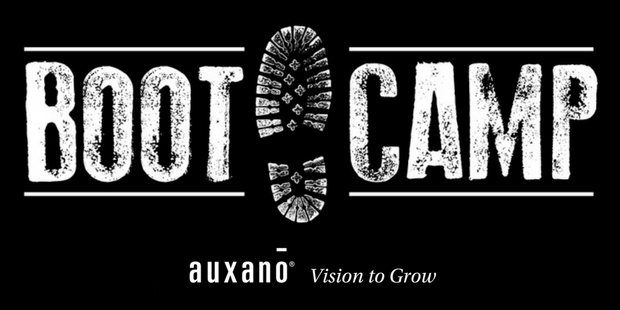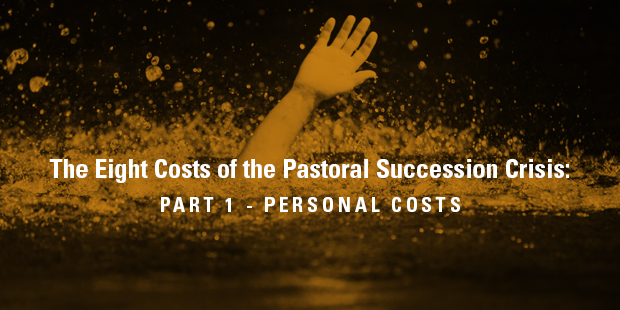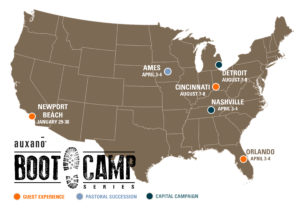Every organization, like the people who comprise them, goes through changes and transitions. The organization called “the church” is no different; in fact, it probably goes through more seasons of change and more types of change than almost any other type of organization.
Growth always requires change. It’s true of any living thing, and it’s true of the church. And while change for the church is necessary, many churches often change reluctantly.
In particular, one type of change in churches seems to be more daunting than most: when a senior leader – especially one with a long tenure of service – steps down.
This act of leadership transition – succession – is intricate and complex, and requires the cooperation, coordination, and communication of dozens of individuals and groups, often extending over many months.
It is not to be entered into lightly, yet many churches – even those who know succession is in the very near future – do not know when or how to start the succession conversation.
Healthy pastoral succession establishes vision apart from identity.
THE QUICK SUMMARY – Leading Change, by John Kotter
Millions worldwide have read and embraced John Kotter’s ideas on change management and leadership.
From the ill-fated dot-com bubble to unprecedented M&A activity to scandal, greed, and ultimately, recession—we’ve learned that widespread and difficult change is no longer the exception. It’s the rule. Now with a new preface, this refreshed edition of the global bestseller Leading Change is more relevant than ever.
John Kotter’s now-legendary eight-step process for managing change with positive results has become the foundation for leaders and organizations across the globe. By outlining the process every organization must go through to achieve its goals, and by identifying where and how even top performers derail during the change process, Kotter provides a practical resource for leaders and managers charged with making change initiatives work. Leading Change is widely recognized as his seminal work and is an important precursor to his newer ideas on acceleration published in Harvard Business Review.
Needed more today than at any time in the past, this bestselling business book serves as both visionary guide and practical toolkit on how to approach the difficult yet crucial work of leading change in any type of organization. Reading this highly personal book is like spending a day with the world’s foremost expert on business leadership. You’re sure to walk away inspired—and armed with the tools you need to inspire others.
A SIMPLE SOLUTION
Vision clarity is a key factor in the healthy implementation of a leadership transition strategy.
Ministries, and the contexts in which they serve, change over time. Communities change. What was once the new development that brought young families and their children to the facility’s front door is now home to empty nesters. The neighborhood that was once Caucasian is now predominately minority. Church ministry facilities built in a rural context are now in the middle of the urban sprawl. Ministries once located in vibrant areas now watch as the neighboring buildings put vacancy signs in the front widow. Conversely, ministries that committed to stay in downtown settings are seeing resurgence as more and more people flock to city centers. As communities change over time, so do the people that make up those congregations.
Ministries with long tenured leadership are wise to invest in a process that helps them recapture their sense of what makes their church unique.
Vision refers to a picture of the future with some implicit or explicit commentary on why people should strive to create that future.
In a change process, a good vision serves three important purposes.
Clarifying the general direction for change
Vision simplifies hundreds or thousands of more detailed decisions. Second, it motivates people to take action in the right direction, even if the initial steps are personally painful. Third, it helps coordinate the actions of different people, even thousands and thousands of individuals, in a remarkably fast and efficient way.
Clarifying the direction of change is important because, more often than not, people disagree on direction, are confused, or wonder whether significant change is really necessary. An effective vision and back-up strategies help resolve these issues.
With clarity of direction, the inability to make decisions can disappear.
With clarity of direction, inappropriate projects can be identified and terminated, even if they have political support.
Facilitating major changes by motivating action
Many times, change is not necessarily in people’s short-term self-interests. The alterations called for in a sensible vision almost always involve some pain.
A good vision helps overcome this natural reluctance to do what is (often painfully) necessary by being hopeful and therefore motivating.
Aligning individuals
Aligning individuals coordinates the actions of motivated people in a remarkably efficient way.
Without a shared sense of direction, interdependent people can end up in constant conflict and nonstop meetings. With a shared vision, they can work with some degree of autonomy and yet not trip over each other.
John P. Kotter, Leading Change
A NEXT STEP
The process of pastoral transition demands vision clarity. If your church does not have this clarity as you prepare for the upcoming succession, it’s time to take a journey on the Vision Trailhead.
The Vision Trailhead is a two-hour trek designed to safely start the “where are we going” conversation with your leadership. This engaging tool will calibrate your visionary communication using challenging assessment questions and memorable church-personality profiles.
The Vision Trailhead will help your team:
- Unpack your communication baggage in order to properly prepare for the vision journey ahead
- Plot your “Trailhead Type” using key waypoints of missional language and church age
- Step onto the clarity pathway with experienced trail guides cheering you onward
Download the Vision Trailhead here and provide a copy for each member of your team. Set aside 2 hours in an upcoming leadership team meeting to walk through this TeamUP tool.
Excerpted from SUMS Remix 53-1, issued November 2016

Tags: John Kotter, Leading Change, pastoral succession
|
What is MyVisionRoom? > | Back to Vision >
